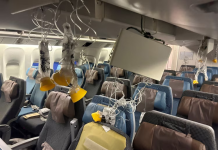Researchers have trained a robotic ‘chef’ to watch and learn from cooking videos, and recreate the dish itself.
The researchers, from the University of Cambridge, programmed their robotic chef with a ‘cookbook’ of eight simple salad recipes.
After watching a video of a human demonstrating one of the recipes, the robot was able to identify which recipe was being prepared and make it.
In addition, the videos helped the robot incrementally add to its cookbook. At the end of the experiment, the robot came up with a ninth recipe on its own.
Their results, reported in the journal IEEE Access, demonstrate how video content can be a valuable and rich source of data for automated food production, and could enable easier and cheaper deployment of robot chefs.
“We wanted to see whether we could train a robot chef to learn in the same incremental way that humans can – by identifying the ingredients and how they go together in the dish,” said Grzegorz Sochacki from Cambridge’s Department of Engineering.
The team devised eight simple salad recipes and filmed themselves making them. They then used a publicly available neural network to train their robot chef.
The neural network had already been programmed to identify a range of different objects, including the fruits and vegetables used in the eight salad recipes (broccoli, carrot, apple, banana, and orange).
Using computer vision techniques, the robot analysed each frame of video and was able to identify the different objects and features, such as a knife and the ingredients, as well as the human demonstrator’s arms, hands and face.
Both the recipes and the videos were converted to vectors and the robot performed mathematical operations on the vectors to determine the similarity between a demonstration and a vector.
By correctly identifying the ingredients and the actions of the human chef, the robot could determine which of the recipes was being prepared.
The robot could infer that if the human demonstrator was holding a knife in one hand and a carrot in the other, the carrot would then get chopped up.
Of the 16 videos it watched, the robot recognised the correct recipe 93 per cent of the time, even though it only detected 83 per cent of the human chef’s actions.
The robot was also able to detect that slight variations in a recipe, such as making a double portion or normal human error, were variations and not a new recipe.
The robot also correctly recognised the demonstration of a new, ninth salad, added it to its cookbook and made it.
“It’s amazing how much nuance the robot was able to detect,” said Sochacki.
20230606-172003




